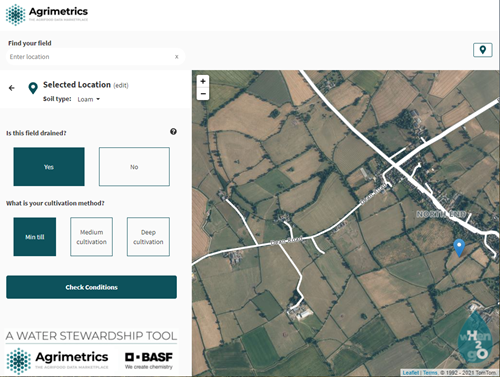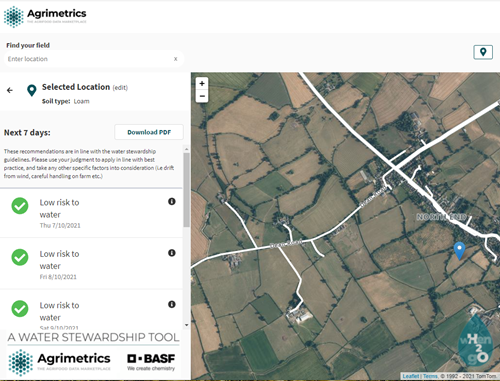Do you know wHen2gO?
07 October 2021
Short article on a tool developed by BASF and Agrimetrics that can be used to help make field-specific decisions about applications of metazachlor and quinmerac to oilseed rape crops in autumn.
wHen2gO Tool
wHen2gO setup
- Step 1. Confirm location, whether drained and tillage practice.
- Step 2. Get predictions and download PDF if required.
The free digital wHen2gO smart tool from BASF and Agrimetrics enables growers to make field-specific informed decisions about applications of metazachlor and quinmerac to oilseed rape crops in the autumn, helping to mitigate potential leaching. The use of the wHen2gO smart tool is supported by the Voluntary Initiative.
Neal Evans, Operations Director of the Voluntary Initiative said, “The wHen2gO smart tool takes stewardship of oilseed rape herbicides to the next level, with the detail it provides allowing growers to make more informed choices. Tools such as this, which improve stewardship, in terms of best practice use of plant protection products by improving farming practice and helping to improve the environment are a winner for us, as that is the whole ethos of the Voluntary Initiative.”
Metazachlor and quinmerac, in line with the other herbicides in the Oilseed Rape Herbicides: Think Water! campaign, have been detected in drinking water at levels which pose a challenge to their registrations at renewal, unless extra care is taken to reduce the levels detected in drinking water supplies.
Dr Evans said, “The advice provided by the wHen2gO smart tool is totally complimentary to the best practice advice provided by the Voluntary Initiative. The metazachlor and quinmerac Water Protection Advice Sheet which can be found on our website, forms the basis for the model that is used by the wHen2gO smart tool. However, the addition of past and forecast site specific weather data into the wHen2gO smart tool elevates these existing stewardship guidelines to the next level when it comes to predicting the risk of run-off and leaching.”
Existing stewardship advice restricts metazachlor and quinmerac applications inside a drinking Water Safeguard Zone to the 30th September and the 15th October outside of these zones but only if conditions give a low risk to leaching. However, these periods have the potential to force applications into a short time frame, and do not account for weather conditions.
Growers are able to gain field specific water stewardship advice when using the wHen2gO smart tool which enables applications to be made into November.
Dr Evans said, “In order to provide a prediction of risk and run off in individual fields, the wHen2gO smart tool encompasses many information streams. By bringing all this data together, and, with most of the data fields in the easy to use wHen2gO smart tool pre-populated, growers can get field-specific forecasts in less than a minute, simplifying and speeding up a process which would otherwise be very time consuming.
The recommendation is displayed in the form of an easy to understand traffic light system which indicates to growers the optimum timing for water stewardship over the following seven days which is really useful when prioritising tasks on farm.
Record keeping is an essential part of an integrated approach going forward and the seven day forecast can be downloaded as a PDF or printed for growers’ records to show evidence of proactive water stewardship.
Plant protection products such as metazachlor and quinmerac can only work in the crop if they remain in the field so any tool that maximises the efficiency of crop inputs will help the environment and allow the grower to produce winter oilseed rape crops sustainably.”


